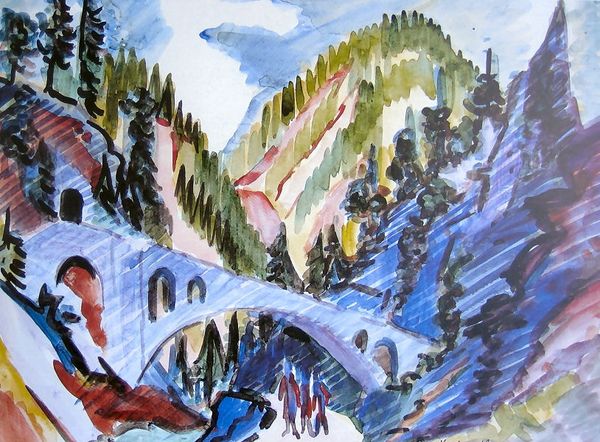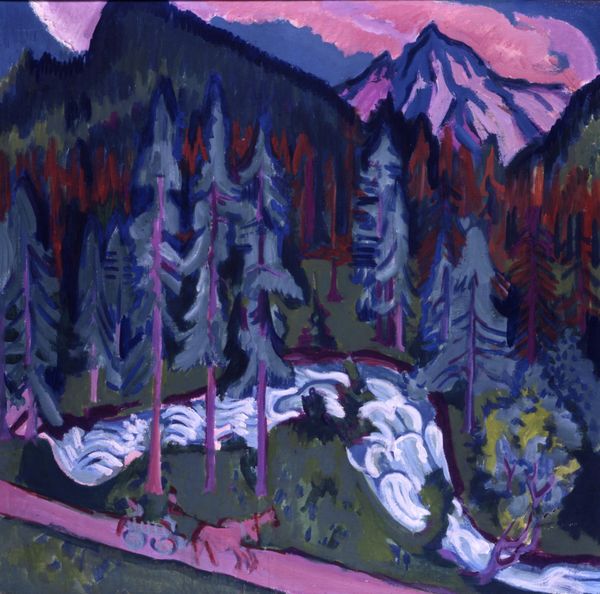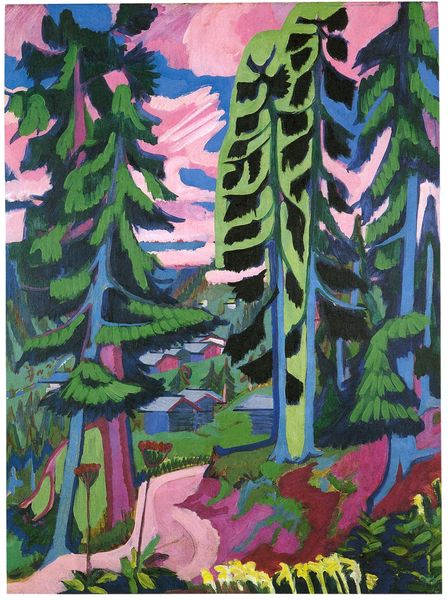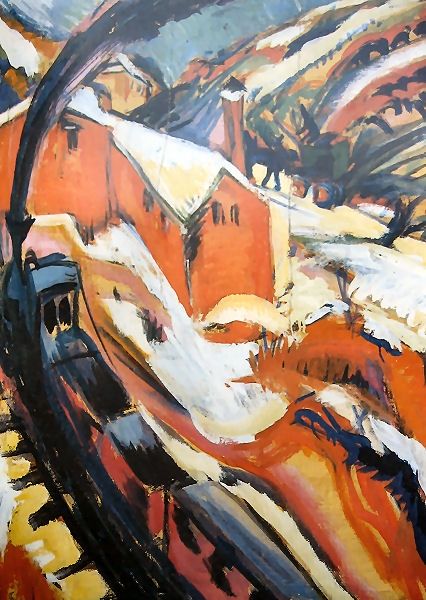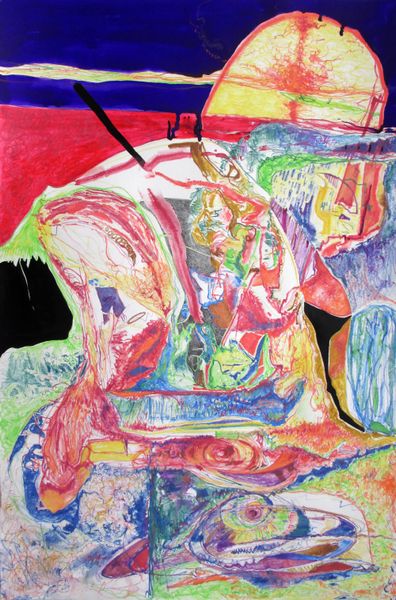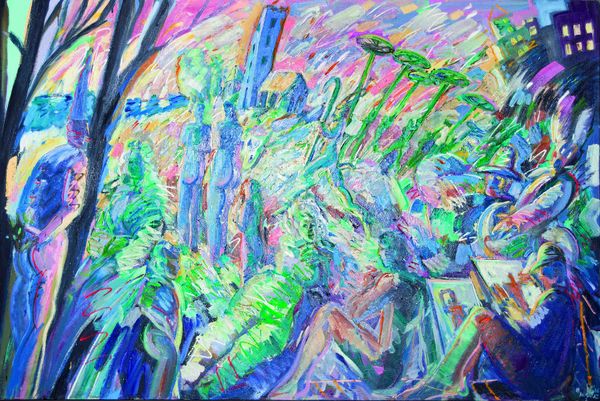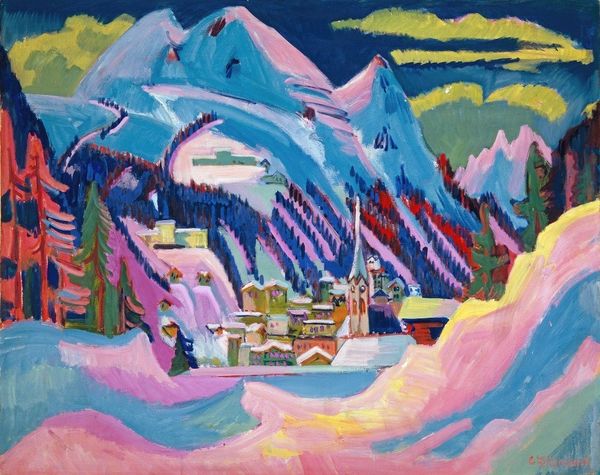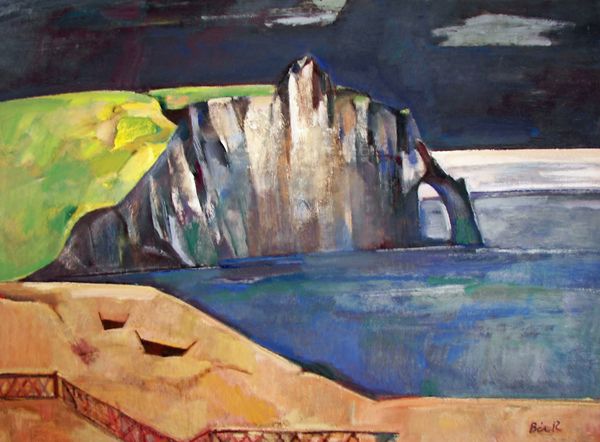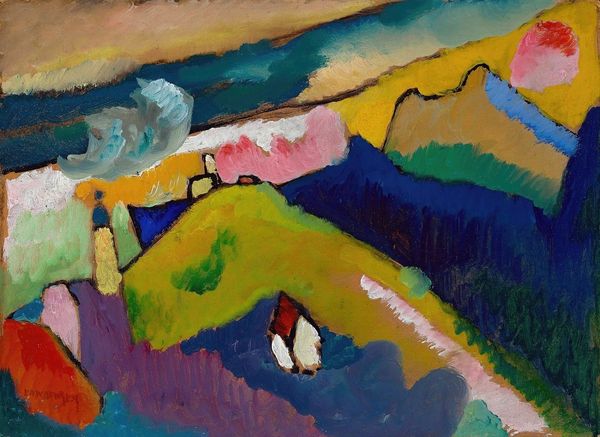
Dimensions: 120 x 120 cm
Copyright: Public domain
Editor: Let's talk about Ernst Ludwig Kirchner's "Bridge in Wiesen," painted in 1926. The bold colors and almost harsh lines create such a striking landscape. It feels very… tumultuous, even though it’s just a bridge and some mountains. What do you see in this piece, beyond the obvious scenery? Curator: Well, let’s delve deeper than just scenery, shall we? Look at that bridge—a symbol of connection, right? But Kirchner paints it in these fractured blues and blacks, almost like it's struggling to hold itself together. Knowing that Kirchner suffered from PTSD after serving in World War I, I can't help but view this bridge as a metaphor. Could it be a reflection of his own fragmented psyche, struggling to connect to the world around him? Editor: That's a really powerful reading. I hadn’t thought about the personal trauma aspect so directly influencing the depiction of something so seemingly stable as a bridge. Curator: Consider the Expressionist movement Kirchner was central to. It was all about conveying inner emotion through distortion and intense color. This isn’t just a landscape; it's a psychological landscape. The jarring colors, the sharp angles—they scream anxiety. It’s a challenge to the viewer: what does this landscape make *you* feel? Editor: So, the bridge isn’t just a bridge; it’s a representation of inner turmoil imposed onto the natural world? It almost feels like a critique of progress, too; industrial advancement looming uneasily in nature. Curator: Precisely! And don't forget that the interwar period saw significant social and political upheaval. This painting, with its discordant colors and precarious structure, can be viewed as a reflection of the societal anxieties of the time. It's a landscape laden with historical context and personal angst, wouldn't you say? Editor: Definitely. I see the bridge in a completely different light now – less about scenic beauty, and more about human struggle. Thanks for your insights. Curator: My pleasure. Art is at its best when it challenges us to consider the world, and ourselves, in new ways.
Comments
No comments
Be the first to comment and join the conversation on the ultimate creative platform.
